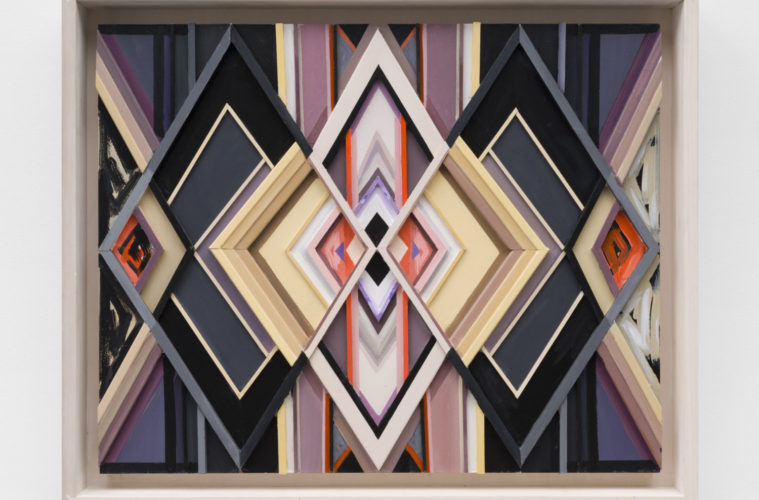Karen Carson has been an insightful practitioner of modes of abstract painting that for decades have touched on, by turns and in combinations, minimalism, pop, and Op Art. Most of this conversation centers on formalist ideas of optics, perception, text as image, and the power of pure color. A great deal of her practice also seeks to wrest control of these same art historical frameworks away from the patriarchal tropes that defined them early on.
Now the new exhibition Middle Ground at downtown’s GAVLAK Gallery pairs Carson’s surprising new paintings on wood with a presentation of her seminal 1970’s sewn “zipper” works — the better to understand the foundations of her current evolution. Though on sight seeming disparate — large-scale essentially monochromatic canvases hand-stitched with industrial zippers, and smaller scale gestural, kaleidoscopic paintings on roughly hand-hewn wood constructions — the juxtaposition highlights the persistent manifestation of the hand of the artist, as well as the role of identity and context in an artwork’s ultimate meaning.
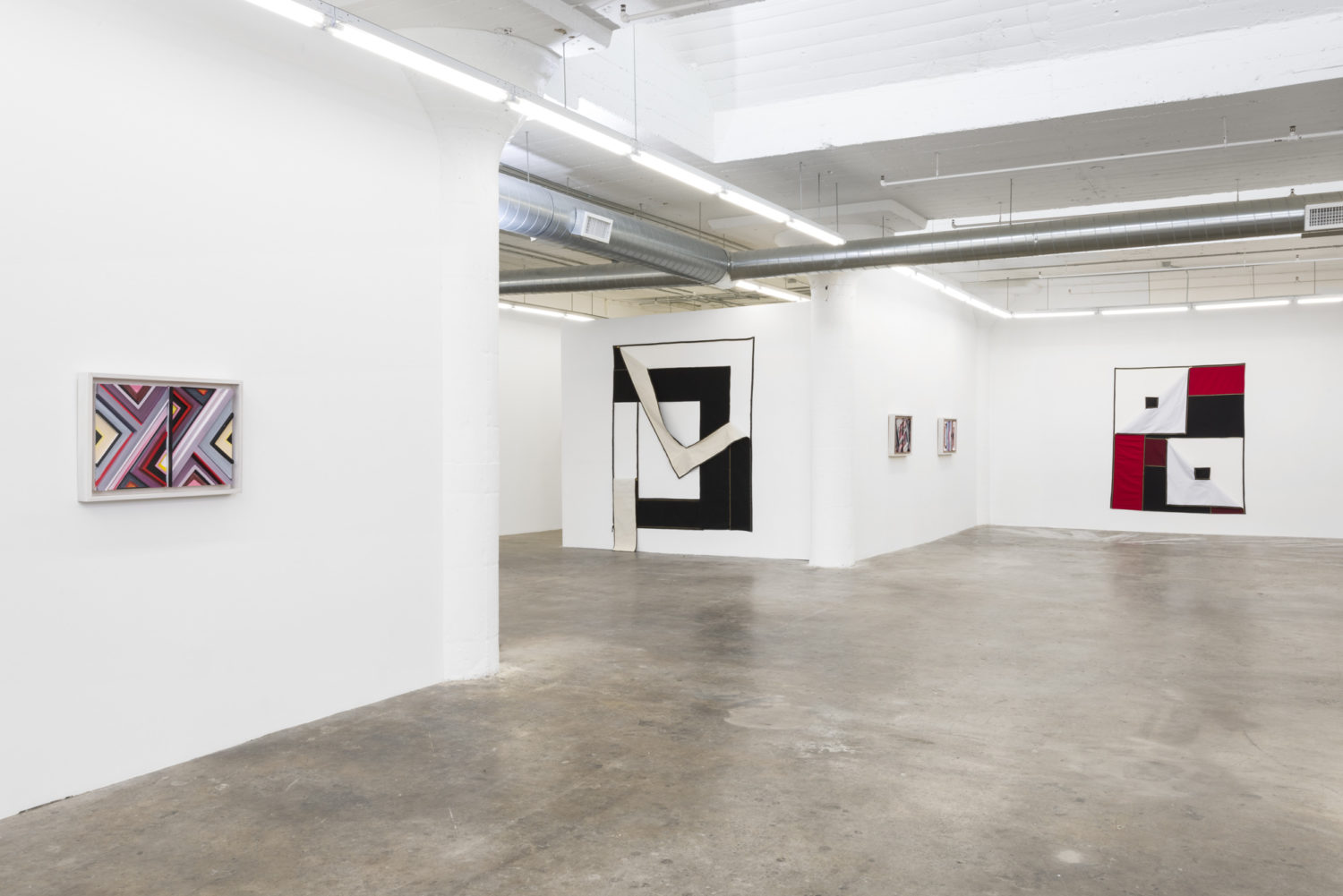
Karen Carson, “Middle Ground” installation view at GAVLAK Los Angeles
The zipper paintings engage with the monumental, materialist, and rather macho minimalist painting scene of the 1960’s and ‘70s, both recreating and subtly undermining those intentions in being made by hand by a woman, with all the attendant gendered social rules that come along. They also poke fun at the preciousness of those objects, by making the zippers functional and allowing the viewer thereby to change the configuration of the works and creating a performative, interactive, experiential dimension within an aesthetic that rarely embraced such things.
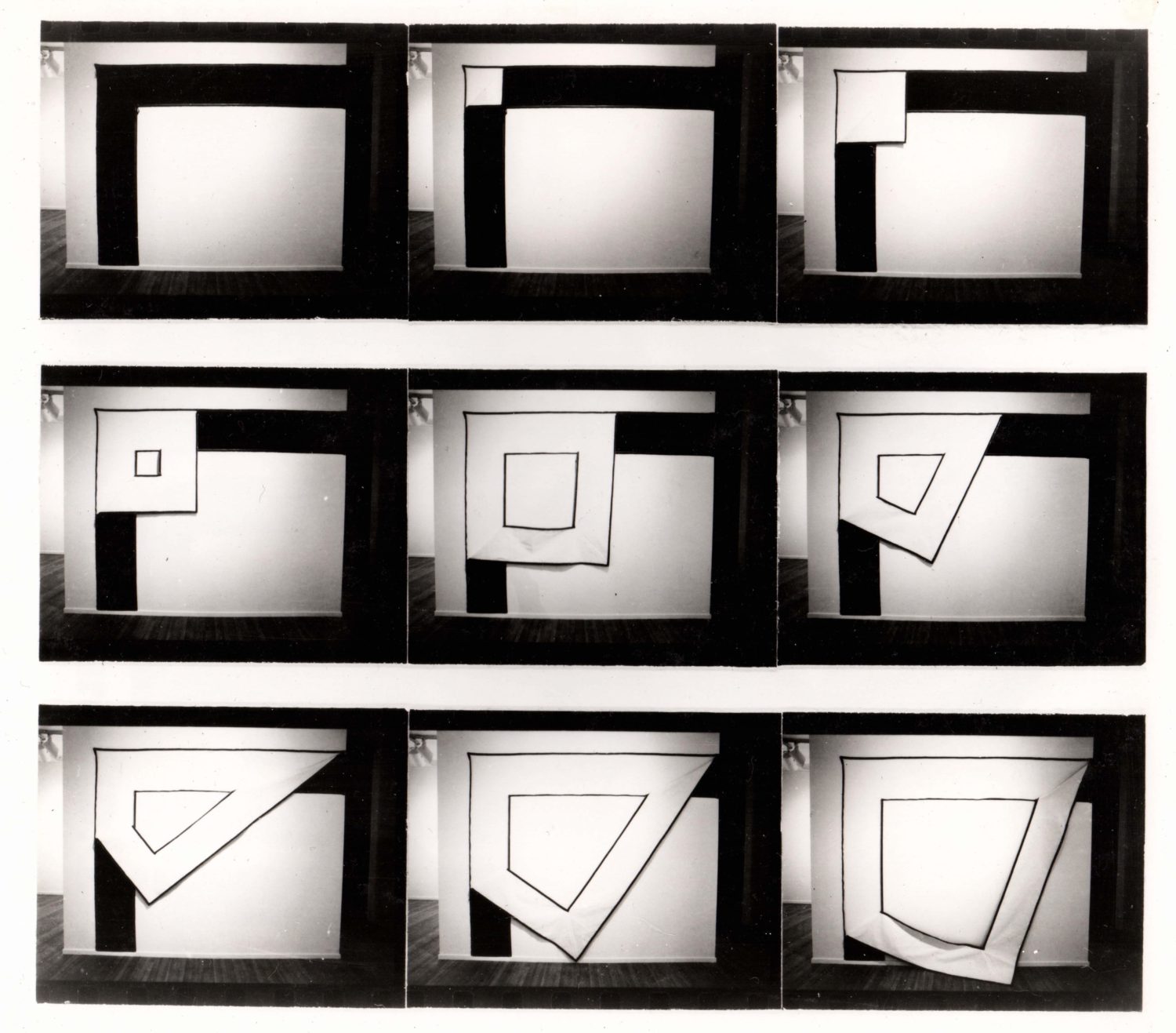
Multiple views, Karen Carson, Right Angle, 1972-Unstretched canvas, zippers- 78 x 97 x 3 in. Dimensions variable. (Courtesy of the artist and GAVLAK Palm Beach / Los Angeles)
“I love the feeling that the wall seems to fold out into space when they are changed and thereby become architectural,” Carson tells the Weekly. “When these were made they were intentionally feminist — a plan to make soft the pervading hard ass of mostly male minimalism.” She decided to revisit the zipper pieces in the current show because, as she puts it, “I am old and I like to see where I came from. I was a grad student when I made these. It was Sarah [Gavlak]’s idea to combine the old with the new and I am gratified to see that with all the time between the two series they share a graphic quality, for instance, the triangle. The zipper pieces seem almost new to me. I really enjoy seeing them again.”
In the undeniable materiality of the new works — the hand-cut and assembled wood constructions, the expressivity and excited gesturalism of Carson’s loosening, intuitive painting technique — more of this energy comes through. Confronted with these jaunty, asymmetrical mandalas and intimately detailed color riots, it becomes impossible not to imagine the artist at work in their creation. The closer you approach, the more teeming with organic energy the abstraction becomes. Farther away and in pictures, the wildness crisps up and the foundations of Carson’s best-known hard-edge abstractions make themselves known.
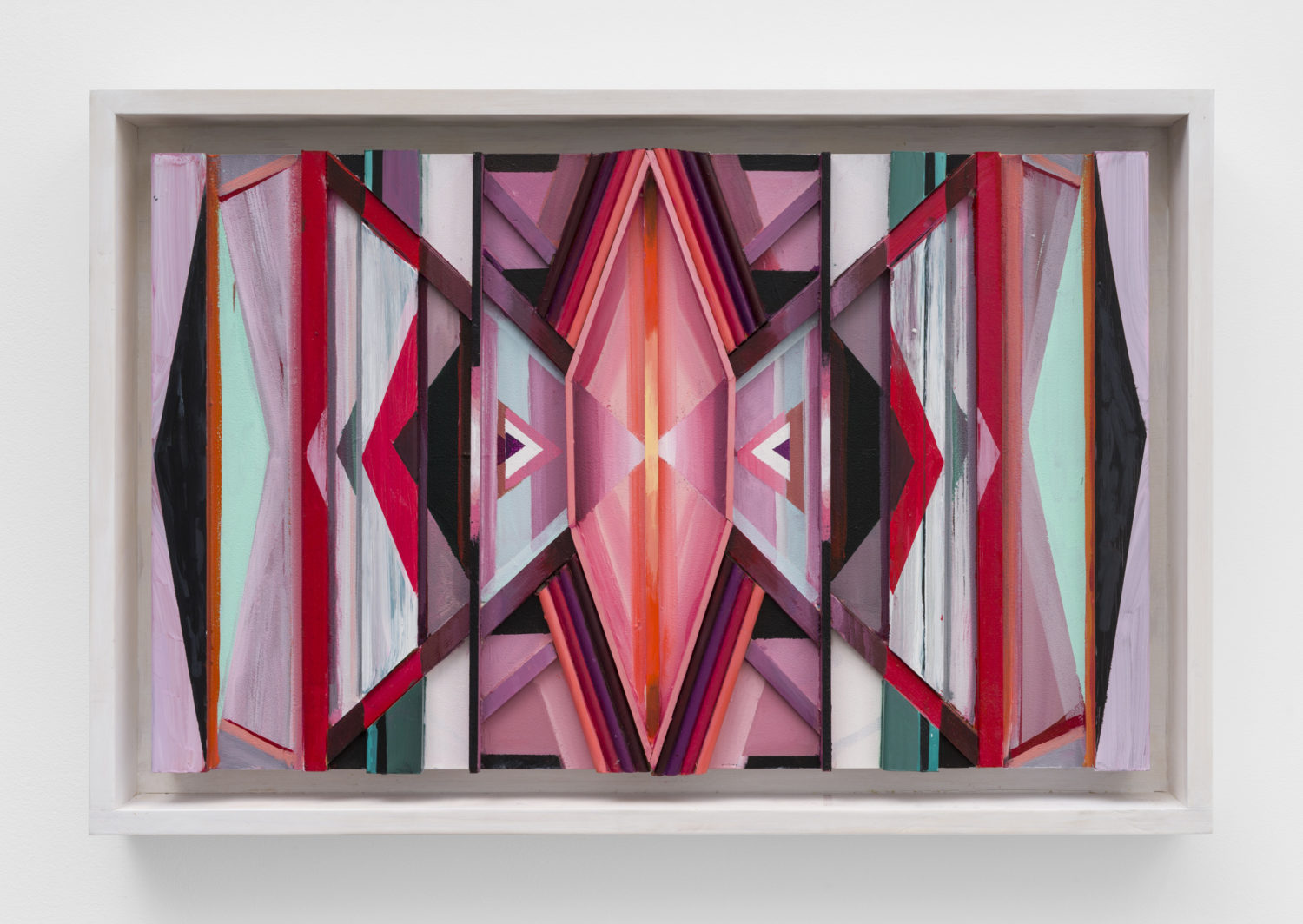
Karen Carson, Butterfly, 2018. Acrylic on bas relief wood. 21.5 x 32.5 x 3 in (Courtesy of the artist and GAVLAK Los Angeles / Palm Beach)
Strident color has been a hallmark of Carson’s aesthetic, complex and saturated color, and that’s still in effect in these works, even though the quality of shape and line has gone a bit feral. “Color is expressive,” she says. “It is emotional and symbolic and is both deeply personal and outgoing. It’s amazing how different color systems give each painting a different temperature. I make conversations between colors — intensity against dull, high contrast, primary vs. tertiary. The color also works to create optical movement for the viewer. I adore color and plotting it out for each new painting is a treat.”
Commenting further on these and further questions of color, tactility, and creative evolution in a career of abstract paintings, Carson explains that, “Experimentation in the studio seems to be a mainstay of my art practice. Since I was a child, I have built things. My art has always embraced a certain material strength, both physically and graphically. The carpentry in my latest bas relief paintings allows me to make strong commitments early on in the work. This alleviates illusion. When the wood is cut and glued the composition is solid and it dictates the rest of the painting. I can work within its contours and I can contradict them,” she says. “It’s an eyeball kind of game.”
GAVLAK, 1700 S. Santa Fe, downtown; by appointment through March 6; gavlakgallery.com.
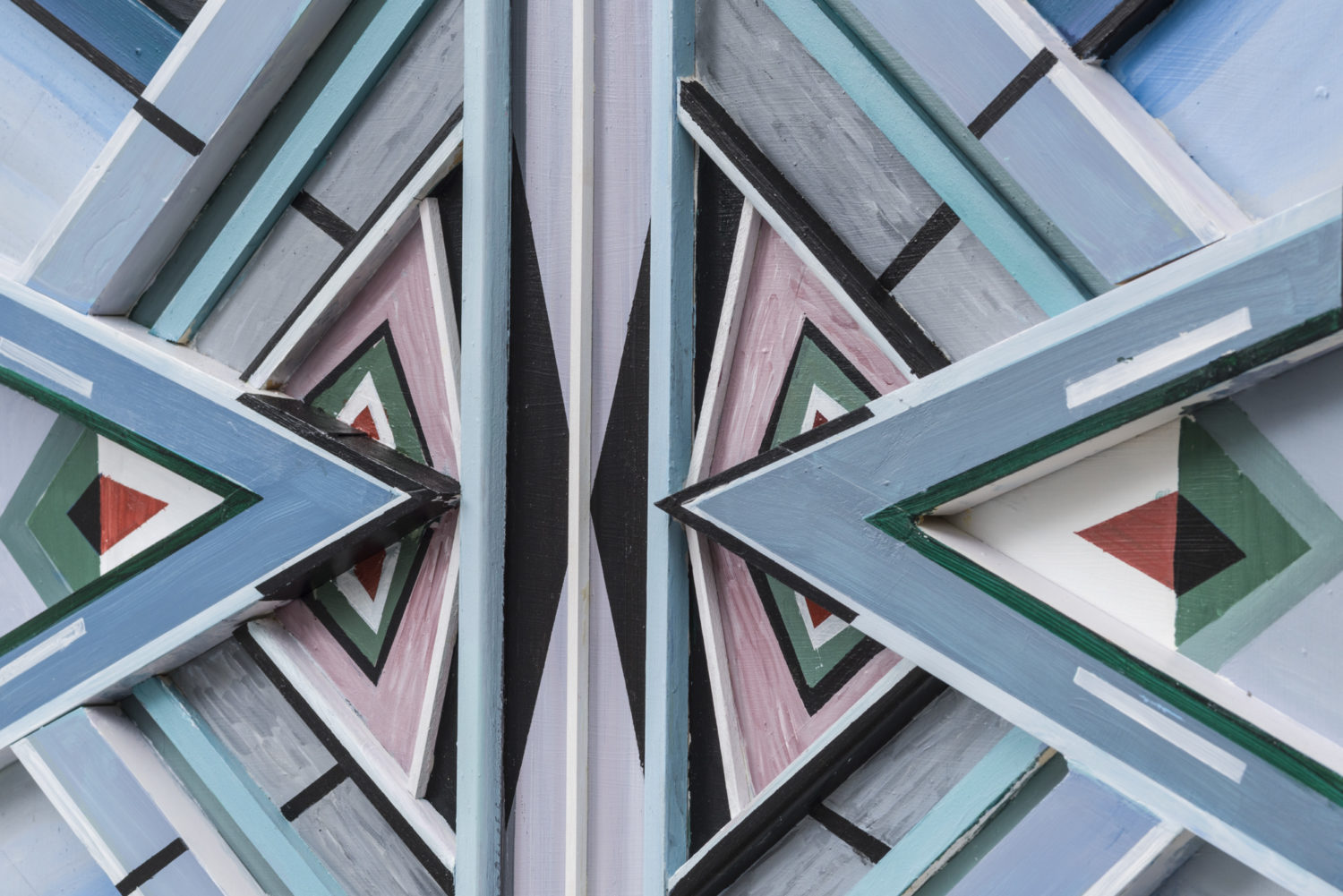
Karen Carson, Blue Triangles, 2020. Acrylic on bas relief wood. 21.5 x 29.5 x 3 in. (Courtesy of the artist and GAVLAK Los Angeles / Palm Beach)
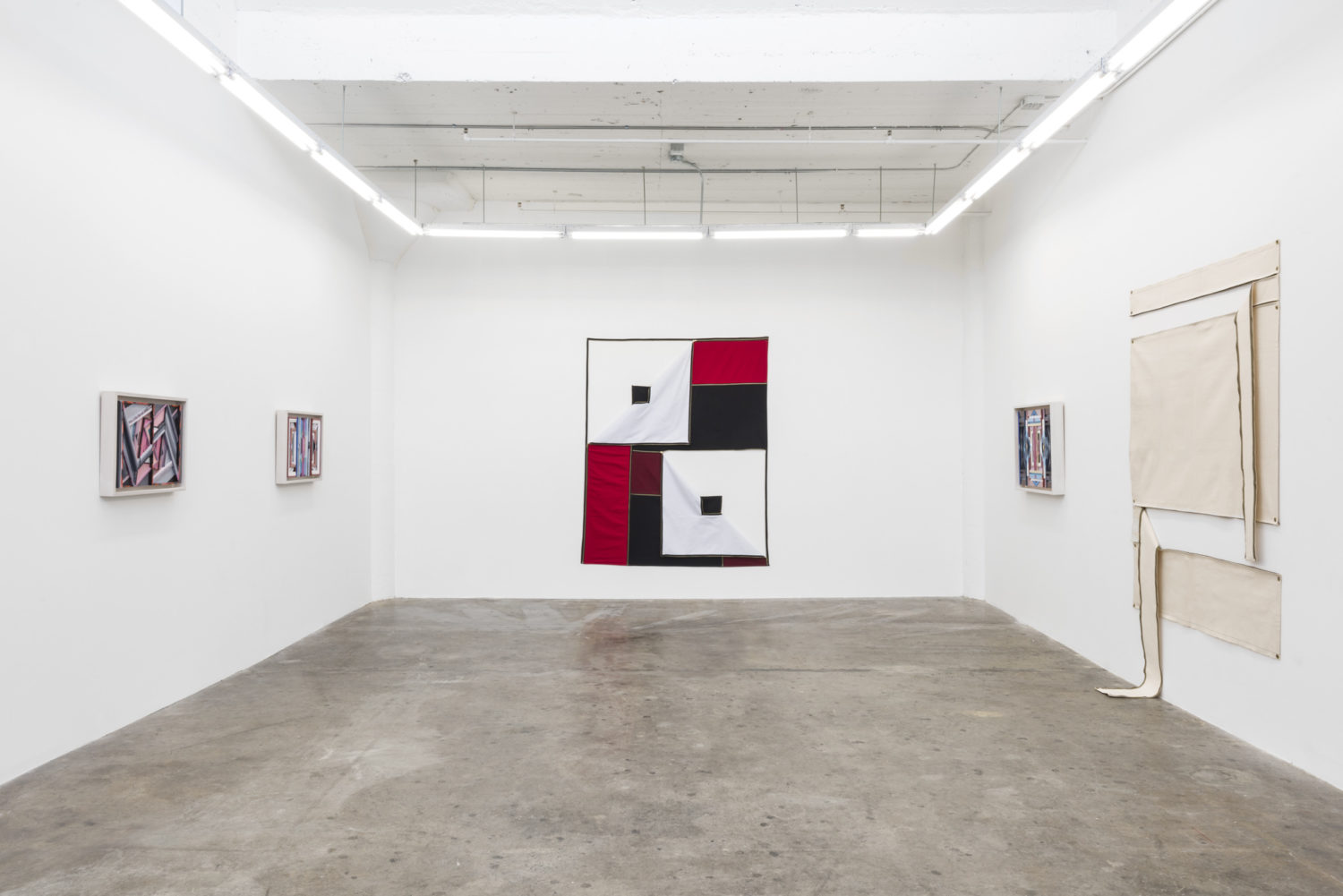
Karen Carson, “Middle Ground” installation view at GAVLAK Los Angeles
Advertising disclosure: We may receive compensation for some of the links in our stories. Thank you for supporting LA Weekly and our advertisers.

